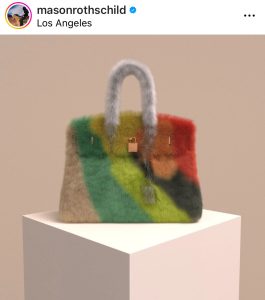The U.S. District Court for the Southern District of New York has rendered an eagerly awaited decision on the use of a trademark in the virtual world of non-fungible tokens (“NFTs”). This landmark ruling is likely to be the first of many.
Both this decision and future rulings will be of particular interest to trademark owners in the retail sector. The advent of virtual platforms like the Metaverse has raised questions about trademark rights in virtual environments. To wit: Do trademark protections over the material assets of leading designers like Hermès and other large manufacturers extend to virtual products that exist only in the Metaverse? The question is a thorny one, and the case law a virtual blank slate.
In the decision at hand, American artist Mason Rothschild was ordered to pay fashion giant Hermès International SA more than $100,000 in damages for profits from the sale of works from his MetaBirkin NFT collection. The works in question were digital reproductions that presented a likeness of Hermès’ iconic Birkin handbags covered in a fuzzy coat of fur.

Photo: Instagram account of @masonrothschild
Although Hermès is not currently active in the NFT market, the company argued that the sale of MetaBirkins products would harm its ability to break into that space, while creating confusion as to their source and misleading associations with the fashion giant.
Mr. Rothschild’s defence was largely based on the artistic relevance of the works. It sought to establish a parallel with Andy Warhol’s famous prints of Campbell’s Soup cans, which the jury rejected.
This key victory for trademark owners does not obviate the need to implement a strategy to protect their retail trademarks in the digital space. For one thing, the decision likely faces an appeal. And even as it stands, the ruling is not definitive: every individual case must be assessed in context. Above all, the decision raises important questions for the art world, and could challenge what can be considered a protectable work.
Despite this win, the matter is far from “in the bag” for trademark owners.

